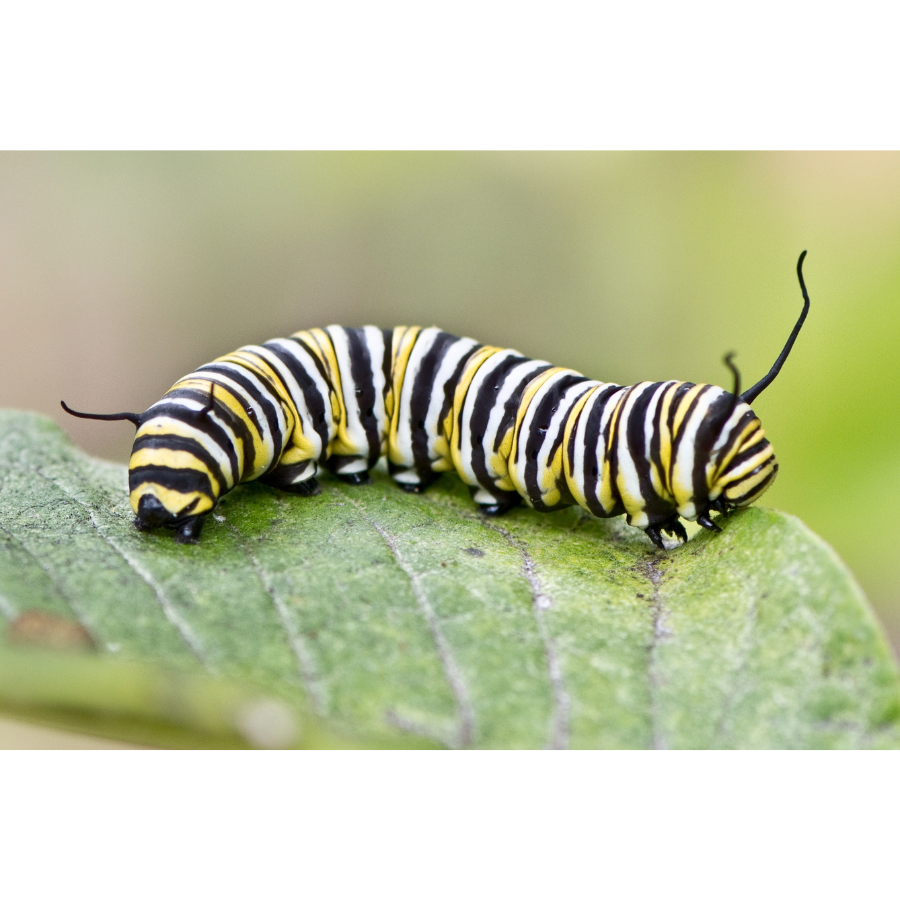
Never make a bet with a monarch butterfly!
Share

Never make a bet with a monarch butterfly!
These little fluttering bugs may look harmless and even magical, but don't be fooled. The monarch butterfly lives on the wild side.
Some insects may hide, some mimic, and some camouflage. The monarch takes a different approach...poison.
As soon as it emerges from its egg, the monarch caterpillar is overtaken by a voracious appetite for toxin-filled milkweed leaves. It chews and chews until it is plump and ready to transform inside its cocoon (AKA a chrysalis). These toxins stay in the body throughout the metamorphosis and into its adult winged form.
Although the milkweed plant toxins are harmless to the monarch butterfly, that's not the case for many of the monarch’s predators. The monarch’s bright orange and black wings send a loud signal that says, "Warning! I'm toxic!" and most who don't heed this warning pay the price.
Unfortunately, just as time has allowed the monarch to evolve a tolerance to milkweed toxins, some parasites and predators have evolved a tolerance too.
One parasite, Ophryocystis elektroschirra (OE), lives on the monarchs body and can fall onto milkweed leaves during egg laying. If OE is consumed by the monarch caterpillars, they may have a hard time breaking out of their cocoons or properly stretching their wings. This lessens their chances of survival.
Wasps and ants are unphased by monarch toxins, and birds like black-backed orioles and black-headed grosbeaks are known to consume huge numbers of monarch butterflies. The black-headed grosbeak has a natural tolerance to the toxin, while the black-backed oriole cleverly avoids most of the toxins by skipping the outer cuticle of the monarch body for lunch.
Despite the monarchs toxic bad-assery, they are currently listed as a candidate species under the Endangered Species Act. Populations of these butterflies have been declining for over 30 years and the annual monarch count in 2025 was only 9,119 for western monarchs. To give you an idea of how low this is, the count in 1995 was over a million butterflies. That’s a big difference!
Monarch butterflies are being hit hard by climate change, pesticides, herbicides, and habitat loss, particularly milkweed loss, their sole host plant.
If you want to help monarch butterflies survive, there are a number of things you can do.
-Plant milkweed native to your area!
-Plant flowers and other plants with nectar too!
-Avoid mowing during monarch migration and breeding periods or when flowers are blooming (this will vary depending on where you live).
-Talk with your local land managers about creating or protecting monarch habitat.
-Volunteer on monarch conservation and citizen science projects. I highly recommend Monarch Joint Venture as a resource for getting involved.
-Show your support with monarch merch! In my shop there are eco-friendly monarch stickers, phone cases, tote bags, and socks. Displaying monarch artwork is a great way to spark conversation about how others can save monarch butterflies too!
The monarch butterfly is one tough bug, but human-caused impacts to its habitat are tougher.
Please consider supporting monarch butterflies, whether that be through planting milkweed in your garden, joining a monarch organization, or buying a monarch sticker. Every action helps!